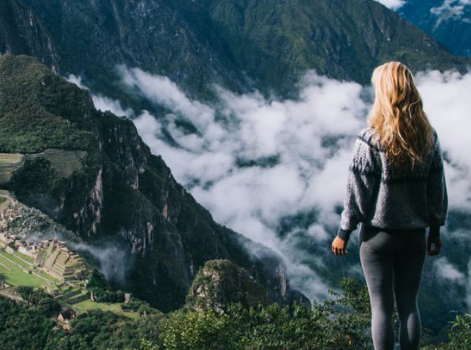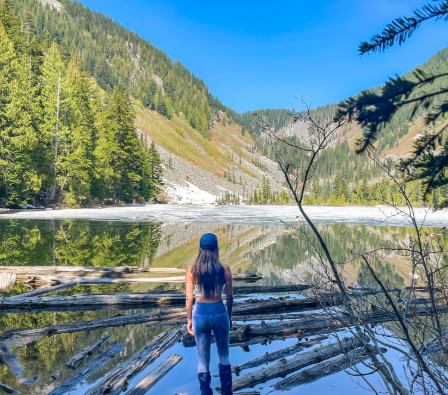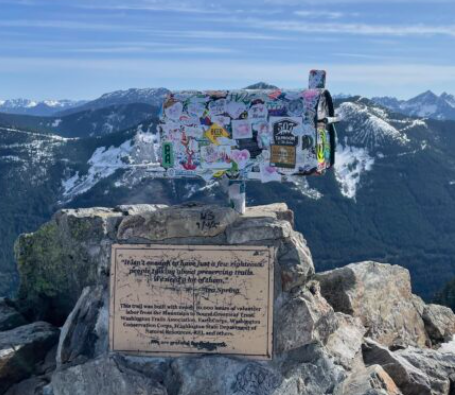
The Salkantay Trek in Peru is often seen as a serious challenge for seasoned trekkers, but for me, it was my very first multi-day hike. Before this, my experience had been limited to day hikes: a few hours of walking, snapping pictures, and returning to the comfort of a warm bed. The idea of hiking for five consecutive days at high altitudes seemed far-fetched, especially considering my previous struggles with hikes like Rainbow Mountain and Laguna Churup, where I needed help just to reach the summit. Yet, despite my doubts, I decided to take on the Salkantay Trek, motivated by a friendly invitation from a fellow traveler, Claire.
With no trekking experience, minimal gear, and a lot of nervous energy, I set off early one morning, joining a group of strangers on a 5 am minibus to Mollepata, the starting point of this iconic trail. At that point, I had no idea what I was getting into, and to be honest, that was probably for the best!
A Glimpse into the Salkantay Trek
This trail covers a distance of about 75 kilometers, typically completed in 5 days and 4 nights, with the final day dedicated to exploring Machu Picchu. The trek reaches altitudes of 4600 meters, posing a serious risk of altitude sickness, and is considered more difficult than the famous Inca Trail. However, this challenge is balanced by the rewarding scenery, including two Inca sites: Machu Picchu and Llactapata.
Unlike the Inca Trail, no permits are required, making it an accessible option for those who want to trek either independently or as part of a guided group.
Day 1: Struggling Up to Laguna Humantay
The first day of the trek presented my first real test: a hike up to Laguna Humantay, situated at 4200 meters. The path was crowded due to its popularity as a day hike from Cusco, and the rain made it muddy and slippery. Despite feeling exhausted from the altitude and struggling with the terrain, I pressed on, stopping occasionally to take in the stunning views of the surrounding valleys and mountains.
Though I was tempted to take a horse like many others around me, I was determined to complete the hike on foot. The rain made the journey even harder, and my lack of proper gear left me drenched, but I managed to reach the lagoon. The sense of accomplishment was overwhelming as I stood by the freezing waters, though I had certainly earned a hot shower and a warm sleeping bag afterward.
Day 2: Conquering the Salkantay Pass
Day 2 was by far the most grueling, with a 21-kilometer trek to the Salkantay Pass. Starting at 6 am, we spent three hours climbing steep slopes, followed by six hours descending through dense rainforests. The highlight of the day was reaching the pass, where the beauty of the Andes took my breath away. The entire group celebrated together, and the descent, though difficult, was exhilarating.
The constant downpour tested my resolve, and I found myself slipping through the mud as I lagged behind the group. But by the time I arrived at the campsite, I was exhausted yet proud of my progress. A hot shower and a warm meal provided much-needed relief before heading to bed.
Day 3: Trekking Along the Inca Trail
By Day 3, I was sore, but I was determined to keep moving forward. This section of the trek involved hiking part of the Inca Trail, and the terrain was much more forgiving. I pushed myself, eager to avoid being the last in the group. My reward was catching an early glimpse of Machu Picchu in the distance, and I felt a surge of energy as I powered through the remaining miles.
The day ended with a visit to a thermal spa, which helped soothe my aching muscles. Although the relaxation was a welcome treat, the mosquitoes quickly reminded me that nature still had its challenges!
Day 4: The Final Push to Aguas Calientes
On Day 4, the trek to Aguas Calientes was relatively short at 10 kilometers, but after three days of hiking, it felt like a breeze. The flat terrain was a welcome change, and after a few hours, we reached our destination. Aguas Calientes, the gateway to Machu Picchu, is a small town where trekkers can rest before the final ascent to the ruins.
That evening, I made sure to get some rest, as the next day would require climbing 2670 steps to reach the top of Machu Picchu Mountain.
Day 5: The Long-Awaited Machu Picchu
On the morning of Day 5, I was running late and almost missed my place in line for the bus to Machu Picchu. Thankfully, I made it just in time, though the foggy weather made the initial views of the ruins less than spectacular. However, as the clouds slowly lifted, the magic of Machu Picchu revealed itself, and I couldn’t help but marvel at this incredible historical site.
Though the trek had been physically demanding, standing among the ancient Inca structures was a moment of triumph. I wasn’t sure if Machu Picchu was the highlight of my journey—after all, the trek through the Peruvian Andes had been full of challenges and rewards in its own right. Nevertheless, reaching this world wonder felt like the perfect culmination of my adventure.
Day 6: Wrapping Up the Trek
On the final day, I hiked back from Aguas Calientes to Hidroelectrica, completing the last 10 kilometers of the trek. By now, the soreness in my muscles was constant, but the sense of accomplishment kept me going. As I reflected on the experience, I realized how much it had opened my eyes to the wonders of the world and my own capabilities. The Salkantay Trek had pushed me outside my comfort zone, and the rewards were worth every step.
Conclusion: A Journey Worth Every Step
The Salkantay Trek wasn’t easy, but it was one of the most rewarding experiences of my life. It taught me the value of perseverance, the beauty of the Peruvian Andes, and the incredible history of the Inca civilization. It was a journey full of highs and lows, but I wouldn’t change a thing.
If you’re considering the trek, know that it’s not for the faint of heart. But if you’re up for the challenge, it’s an adventure that will stay with you long after the last step.








